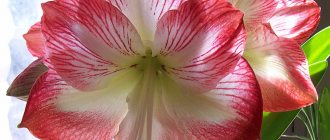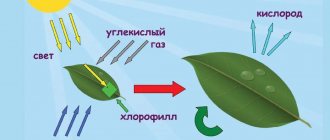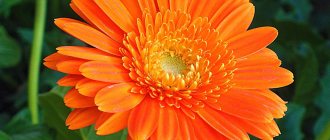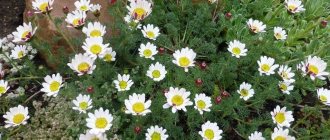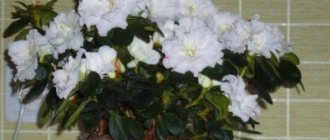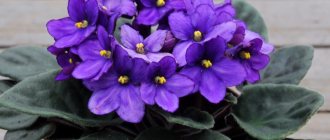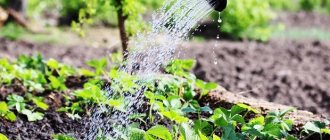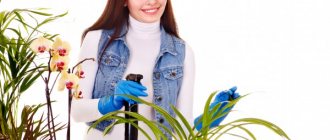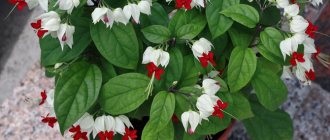The flora of the planet is very diverse. The science that studies it is called botany. Children begin to learn the basics in elementary school.
Botany is a systematic science that allows us to consider the stepwise structure of the plant world, dividing it into kingdoms, divisions, classes, orders, families and species. This structure is called hierarchical. The construction of a harmonious system of the plant world and its classification have been carried out over many centuries. The most important contribution to the development of plant classification was made by Carl Linnaeus. Our task is to consider specific types of plants (list). 3rd grade of primary school is the time when children actively study botany. General education textbooks offer the following types:
- seaweed;
- bryophytes;
- ferns;
- conifers;
- flowering
Facts from history
Plants are a biological kingdom that consists of multicellular living organisms. Despite the lack of ability to move, representatives of the species lead active life activities. Various chemical processes occur inside the leaves, stems and roots that ensure the normal functioning of the entire system.
The first description of the diversity of the plant kingdom belongs to the ancient philosopher and scientist Aristotle. He did not give an exact definition, name, or characteristics of families or subkingdoms, but placed plants between representatives of the animal world and inanimate objects, since they are not able to move.
After some time, scientists identified a separate kingdom of fungi, and the plants became a separate species, which is still studied today. In addition, experts have identified some varieties of algae that do not have a root system, like other representatives of the plant world.
Characteristics and physical characteristics of plants
Autotrophs and photosynthesis
Almost all plant species are autotrophs. This name for plants means that they can produce their own food and do not depend on other organisms for food. Plants are photosynthetic, meaning they make their own food using energy obtained from light. A plant cell contains "chloroplasts", which are organelles containing a green pigment known as "chlorophyll". Chlorophyll comes in two types: chlorophyll A and chlorophyll B. Plants use these pigments to make their food in a process called “photosynthesis.” In this process, plants use the energy of sunlight to convert carbon dioxide from the atmosphere, as well as water, into simple sugars - plant substances they need to build cellulose and provide energy to the plant. Which plants contain chlorophyll A and which contain chlorophyll B? All green plants contain two forms of chlorophyll: chlorophyll A and chlorophyll B. The pigment chlorophyll B is not found in “red” and “brown algae”. During the photosynthetic process, chemical energy and structural substances in plants are produced from water and carbon dioxide with the help of pigments and sunlight. Therefore, the plant environment must contain these components.
Division into aerial and root parts
Land plants have the ability for unlimited growth of meristem (plant tissue of trunks and roots). The division into aerial parts and roots is a common property of most plants. The division between these two parts of plants occurred during the evolutionary development from aquatic to terrestrial environments, and each of these parts is necessary for the survival of plants on land. Plant tissues and their functions, structure and arrangement all serve to ensure their survival. Plant root this definition is the part of plants that is primarily found in the ground and serves to bring water and minerals from the soil. Nutrients dissolve in water and rise through the vessels of plants to the blossoming buds and other parts of the plants. They also serve to anchor the plant to the soil, providing stability. The aerial part includes all structures that are in the air, such as trunks, leaves, flowers and fruits. The aboveground part absorbs carbon dioxide and light energy needed for photosynthesis, provides a surface for gas exchange, and contains reproductive organs. Each of these parts, the roots and the above-ground part, depend on each other, since the roots are not capable of photosynthesis, and the above-ground part cannot receive water and inorganic substances.
Inability to move
Plants are unable to move. They do not have limbs to move around like animals. Instead, they use other, motile organisms for pollination.
Lack of sensory and nervous systems
Plants do not have the ability to feel because they do not have sensory organs or a nervous system. Although some rare plants have sensory organs, for example Venus Fly Trap, which respond to the vibration of flies caught in them. Some plants sense the location of other plants and attack and eat them.
Alternation of chromosomal generations
Plants exist in two types of generations or phases - Haploid and Diploid generations.
I) Haploid phase (generation) - In this phase, plant chromosomes are present in the form of single copies. A haploid organism produces gametes which, when pollinated by the gametes of another member of that plant, will form seeds that will develop into a diploid organism. The haploid generation is called Gametophyte and produces sex cells, or gametes.
II) Diploid phase (generation) - In this phase, the nuclei of plant cells contain two sets of chromosomes (paired chromosomes). A diploid organism produces Haploid spores, which germinate to form a Haploid organism. This “alternation of generations” is found only in plants and some seaweeds. The diploid generation is called Sporophyte, which literally means "Spore Plant".
Plant organism eukaryotic multicellular
Most plants are multicellular organisms built from eukaryotic cells. A plant cell drawing with captions is given below. Plant cells have an internal compartmentalization, a nucleus that contains chromosomes and chloroplasts. Plant cells have a strong outer cell wall made of cellulose fibers embedded in a matrix of several other types of polymers, such as pectin and lignin. Plant cells have vacuoles (containers filled with liquid in the cytoplasm of the cell), which are surrounded by a separate membrane. Young plant cells often contain many small vacuoles, but in mature cells, they aggregate and form a large vacuole. Vacuoles perform several functions: the function of storing reserve substances (for example, proteins in seeds), the function of storing waste products, and others. Plants differ from algae in their multicellular structure and from fungi in their ability to photosynthesize.
plant cell
Tropism
Plants grow in response to stimuli within their environment. These responses to stimuli are called tropism and are controlled by plant hormones.
There are three main types of Tropism:
I) Phototropism - the desire of a plant to move towards light is called phototropism. This is accomplished by the rapid growth of cells on the dark side of the plant, which causes the plant to bend in the opposite direction.
II) Gravitropism - the direction of plant growth. A plant that shows Positive Gravitropism will grow down towards the ground. A plant that exhibits Negative Gravitropism grows upward from the ground. Most plants are negatively gravitropic. Gravitropism is controlled by auxin (a plant hormone). In a horizontal root or stem, auxin is concentrated in the lower half. In a plant with positive gravitropism, this concentration of auxin will inhibit the growth of cells on the lower side, causing the stem to bend downward. In a plant with negative gravitropism, this concentration of auxin will stimulate the growth of cells on the lower side, causing the stem to bend upward.
III) Zigmotropism (Thigmotropism) - This is the plant’s reaction to touching the surface, to wind and other influences. The plant may react by thickening or curling when it touches surrounding objects. Tree trunks, for example, become thicker when exposed to strong winds, and vines grow straight until they collide with something and then begin to wrap around it.
Features of land plants
Most plants live on the ground and have adapted to prevent drying out. To achieve this, plants have porous structures inside them to absorb and transport water throughout their bodies (Bryophytes are an exception). Another feature of land plants is their strong and rigid internal structure, which allows them to remain upright. This rigidity is provided by the structure of the cell wall, which consists of cellulose, a complex carbohydrate and lignin, a three-dimensional polymer of phenol derivatives that strengthens the cellulose fibers.
Conclusion
The article describes the plant kingdom, gives a classification of plant species, gives a plant cell drawing with captions, examples of plants trees, shrubs, grass, gives characteristics and identifies the main physical features of plants.
Stages of evolution
If you believe the finds and conclusions of paleontologists, the separation of flora and fauna occurred 3 billion years ago. This period dates back to the Archean era, when the first units with plant characteristics were discovered.
In the Proterozoic era, some already had an idea of eukaryotes, which, in their opinion, were the result of the transition to this state of an ordinary amoeboid cell. It was this transition that caused the appearance of certain types of algae, which became the first true representatives of the plant world. Somewhat later, red, green and blue-green algae appeared.
In the Paleozoic era, the first higher units—rhiniophytes—appear. This occurs as a result of many transformative processes that provoke the disappearance of some seas. As a result of such changes, many algae began to adapt to life on land, and survived thanks to the formation and development of cyanobacteria and bacteria on the soil.
Cooksonia is considered one of the most ancient plants discovered on the territory of modern Scotland . Paleontologists have determined that its age is close to 415 million years. After the discovery of Cooksonia in 1937, the plant world divided into two main lineages: saprophytic, or vascular, and gametophytic, or bryophytes.
Historical reference
For a long time, plants were only a source of food or the basis for potions, and no attempt was made to classify them. Aristotle's student Theophrastus was the first to try to divide plants into classes. In his work “Historia plantarum” he distinguished shrubs, trees, subshrubs and herbs. It is he who is rightfully considered the “father of botany”, and you can see his portrait on page 10 of the textbook “Biology. 6th grade” edited by I. N. Ponomareva.
In the 1st century, Dioscorides, a Greek scientist, collected descriptions of medicinal herbs known to him. With the fall of the Roman Empire, science fell into decline, especially botany, which did not study the transformation of metals into gold and could not in any way contribute to the enrichment of those who studied it. In medieval Europe, only descriptions of medicinal plants or herbalism were in use.
Attempts to create classification systems were made by various scientists in the mid-18th century. One of the first, in 1763, was the French scientist M. Adanson, who published the work “Plant Families,” where, based on taking into account the maximum possible number of characters, he systematized known plants.
Carl Linnaeus, Sebastian Vaillant, and Joseph Tournefort worked on the classification of plants. For classification in biological systematics, it is customary to use taxa.
Biology. 6th grade. Textbook
The biology course presented in it is dedicated to the study of plants and continues the development of the concept laid down in the textbook “Biology” for grade 5 (authors I.N. Ponomareva, I.V. Nikolaev, O.A. Kornilova). The concept is based on a system-structural approach to teaching biology: the formation of biological and environmental concepts through the establishment of general properties of living matter.
Buy
Features
Understanding the taxonomy or systematic groups of plants will help by studying the main characteristics of representatives of this kingdom, their general characteristics and structure. Experts identify several main features of plants growing on Earth:
- the cells that make up leaves, stems and other parts have dense cellulose membranes;
- in cells you can find special chloroplasts containing chlorophyll, which enables the process of photosynthesis;
- thanks to chlorophyll, almost every unit is green;
- attached lifestyle;
- nutrients and energy are stored in the stems or leaves in the form of starch;
- the distinctive feature of each unit is the ability to grow throughout life;
- vital activity and all important processes are regulated with the help of phytohormones, which in structure are somewhat reminiscent of human ones;
- have a dense shell, which usually does not allow light to pass through and consists of cellulose;
- by nature they are producers, that is, they produce organic substances under the influence of carbon dioxide and solar radiation.
In addition, experts noted the alternation of generations. This feature is not considered unique, but allows one to distinguish representatives of the plant world from fungi and some algae.
Vegetation cultivation
Since ancient times, the flora of the Earth has developed without direct human intervention; accordingly, all flowers and herbs grew wild. The development of man has determined the need for him to cultivate the land and grow plants for his own needs. Under the influence of human labor, plants changed and acquired new characteristics. Thus, cultivated plants arose, which from Latin means “cultivated”, “processed” plants grown to produce food, medicine, livestock feed, etc. The main distinguishing feature of cultivated plants is that they are grown regardless of their place of origin and are not able to reproduce on their own.
Today, many cultivated plants are obtained from wild ones through selection or genetic engineering. Cultivated flowers and trees are divided into grain, spinning, vegetable, fruit, and ornamental. Let's look at cultivated plants and a list of species.
- Grain plants are plantings whose main product is grain, used as a food product, raw material for industry, and animal feed. The main types of grain crops are wheat, rye, barley, oats, rice, millet, sorghum, and buckwheat.
- Spinning mills are those from which fiber is made for the textile industry. The main types of spinning plants: flax, fiber, cotton, jute, hemp, kakpok, kenaf, crotalaria, sisal, furkrea.
- Vegetable plants are planted to produce fruits. Main representatives: tomato, pepper, eggplant, physalis, cabbage, kohlrabi, watercress, radish, pumpkin, watermelon, melon, cucumber, carrots, beets, celery, asparagus, onions, garlic.
- Fruiting plants are plants that bear fruit. These include: orange, lemon, grapefruit, banana, avocado, mango, pomegranate, grapes, almonds, coconut palm, olive, strawberry, gooseberry, currant.
- Ornamental plants are plants used to decorate premises and places of rest for people. Types of ornamental plants are: acacia, barberry, magnolia, lilac, thuja, boxwood, juniper, rose, peony, carnation.
The most attractive are decorative plant species. A list and photos of examples can be seen in the school textbook. This also includes home flowers.
Plant species (list of indoor houseplants) includes tree-like ones. The main subtypes of ornamental plantings will be described below.
Structural features
The diversity of the structure of plant units makes it possible to divide them into unicellular and multicellular types. Prominent representatives of the first species are Chlamydomonas and Chlorella. One of the structural features is the rather large size of each cell, which sometimes reaches several centimeters. Eukaryotes have a rigid cell wall and a large amount of cellulose.
Each cell contains chloroplasts and vacuoles, which provide elasticity. During cell proliferation, the septum is formed by containing a large number of phragmoplasts. Plant spermatozoa have two or more flagella. The multiflagellar system resembles the structure of green algae cells.
Cells of units of the plant world are combined into tissues, the peculiarity of which is the absence of intercellular substance and the presence of a fairly large number of dead cells. Some parts of the plant mainly consist of just such cells. In addition, one of the differences between representatives of the plant and animal world is the composition of tissues, which may include different types of cells.
Depending on the type of plant, its structure may differ. The body of some species is represented by a continuous layer without branches. Others have a developed root system and above-ground part. Root vegetables, for example, are distinguished not only by the presence of multiple sinuous roots, but also by fruits of different shapes and sizes. Leaves act as photosynthetic organs and contain the largest amount of chlorophyll.
The bud acts as a separate organ in some plant species. An example of such representatives would be some trees on which buds appear earlier than leaves and flowers.
Glossary
- Taxon
is a group consisting of individual objects that have common characteristics and are united on the basis of these characteristics and properties. The main ranks of taxa are species, genus, family, class, division. - Thallus
- a plant body in which plant organs are not distinguished and there is no vascular-fibrous bundle.
- Chromatophore
- plastids of various shapes containing pigment in algae.
- Sporophyte
- The diploid phase in the development of plants and algae, which develops from a fertilized cell and produces spores.
- Gametophyte
- haploid phase in plant development, develops from spores and produces gametes.
- Gametes
- sex cells.
- Rhizoid
- one or more undifferentiated cells in lower plants that perform the function of a root.
Life cycle and reproduction
A characteristic feature of vegetation is the ability to reproduce sexually and asexually. The first method involves oogamy, which higher vascular plants are capable of, while the second is most often carried out vegetatively. The life cycle of large and small plants includes several stages:
- In the life cycle, haploid, or sexual (gametophyte), and diploid, or asexual (sporophyte) generations constantly alternate.
- On the gametophyte, female and male genital organs are formed, the sperm enters the egg, and a zygote is formed, which after some time forms an embryo.
- Typically, the embryo becomes a sporophyte in which sporangia are formed. In the sporangia, female and male cells are formed again, and the process is repeated.
A similar cycle is characteristic of Bryophytes and Ferns. Seed plants require additional help for fertilization, which is carried out through pollination. Angiosperm species also require pollination, after which a flower is formed, which turns into a fruit after some time. This order allows the life cycle not to be interrupted, and units are always at a certain stage of development.
It has been noted that in flowering plants in a temperate continental climate, the life cycle depends on weather conditions and may slow down or stop completely.
Main types
The classification of plants involves their division into two subkingdoms (higher and lower) and several main varieties. Among the lower ones, unicellular organisms predominate. In the subkingdom of higher plants, experts distinguish ferns, mosses, gymnosperms, angiosperms or flowering plants, and algae. Each subspecies has its own characteristics:
- The bryophytes include the simplest above-ground representatives. They grow in forests, on moist soils, shaded areas, are common in different climatic zones and are represented by many varieties. It is worth noting that mosses do not have their own conducting system, this makes them the most primitive. They absorb nutrients and moisture throughout the entire body area. Units of this species are very low, their height rarely exceeds 20 cm. Most mosses are represented by perennial plants; sexual reproduction predominates in them. Experts distinguish three classes of mosses: anthocerotes, phyllophytes and liver mosses.
- Ferns are also called spore ferns. They, like bryophytes, prefer moist, shaded habitats. The majority of ferns are represented by herbaceous plants, but tree-like and aquatic forms are also found. The species is divided into several classes: mosses, horsetails, ferns.
- Algae differ from others in their most primitive structure. They do not have roots, stems or leaves, and absorb nutrients from water over the entire surface of their body.
Scientists have studied these species carefully, since their simple structure and life cycle are not difficult to record.
Gymnosperms and angiosperms
The type of gymnosperms includes about 1000 different representatives. Their main difference from angiosperms will be the absence of any shelter for storing seeds. They also do not have fruits or flowers. This division of higher plants includes several classes:
- Coniferous plants can be represented by trees and shrubs. Their seeds develop in cones located on the branches, are easily separated and are not covered with a film. The main representatives of the class will be cedar, pine, spruce, cypress, fir. Conifers are distributed almost everywhere, especially in the wild.
- Cycad plants are an ancient group. The most striking representative is the penetrating cycad.
- Ginkgoaceae are considered an ancient class of plants. The main representative is ginkgo, considered relict. The only modern species is Ginkgo biloba.
- Gnetovye come in different forms. Most often they are represented by vines, but shrubs and trees are also found. Common in Southeast Asia, they are grown for their edible fruits and seeds, from which they make flour. The bark of oppressed trees is very durable and is used for making threads.
The angiosperm plant species includes shrubs, trees and grasses. They are considered the most developed representatives of the flora. The main difference between this species is the presence of a fruit and a flower. The seeds are hidden in the ovary, from which the fruit is formed. Angiosperms include several classes, but the largest are the dicots and monocots.
The first are distinguished by the structure of the seed, which has two lobes. The leaves usually have a reticulate structure and also have a central root. Small branches go from it. Dicotyledons are divided into 6 subclasses and many varieties.
The embryo of monocot plants has one cotyledon. The representatives of the class themselves are endowed with a fibrous root system and an arcuate pattern of leaf venation. The class is divided into 5 subclasses and many families.
Types of plants. List in Russia
Each area is characterized by certain types of plants, a list of which we will also provide. Climatic conditions, soil cover, historical features, human activity are factors influencing the uniqueness of the flora of the natural area. All these factors must be considered together.
Let's consider the species diversity of the flora of the Russian Federation. Considering the vastness of the territory, several types of plant zones in Russia can be distinguished, each of which is characterized by certain types of plants. The list (3rd grade of secondary school) can also be found in the botany textbook.
The main types of flora of Russia include:
- tundra type, the main representatives of the flora of which are green mosses, moss, lingonberry, crowberry, partridge grass, cassiopeia, dwarf birch, polar willows, polar poppy, arctic bluegrass;
- forest type, which is represented by spruce, fir, cedar, pine, birch, oak, maple;
- steppe type, which is characterized by the growth of herbaceous vegetation;
- desert type, the vegetation of which are considered to be wormwood and solyanka;
- meadow type, the vegetation of which is represented by herbaceous perennials: creeping buttercup, field mint, bentgrass, meadow foxtail, creeping wheatgrass, dandelion, toadflax, bark.
- swamp type, which is characterized by moisture-loving plants.
The plant “palette” of Russia, as we see, is very wide. Geographically, plant species, a list of which is initially significant, increase in quantitative terms from north to south, but in deserts they decrease somewhat due to the dry climate, and increase from plains to mountains.
Role in a person's life
Flowering plants are considered the most common class of plants on the planet. There are more than 250 thousand of them. However, all types and classes play an important role in human life. All living things exist mainly thanks to plants. They help purify the air, which is vital for people in large populated areas.
In addition, after death they decompose, fertilizing the soil. Scientists have determined that with a decrease in the number of representatives of the plant world, the volume of oxygen has decreased. With regular destruction of forests, these numbers decrease, which can lead to disaster.
An important function of plants is medicinal. Among the representatives of flowering plants there are many species that have unique therapeutic properties for the human body. Today, herbal medicine is not as developed as it was several decades ago, but remains in demand and effective. Another important property of plants is the saturation of the body with vitamins and minerals.

